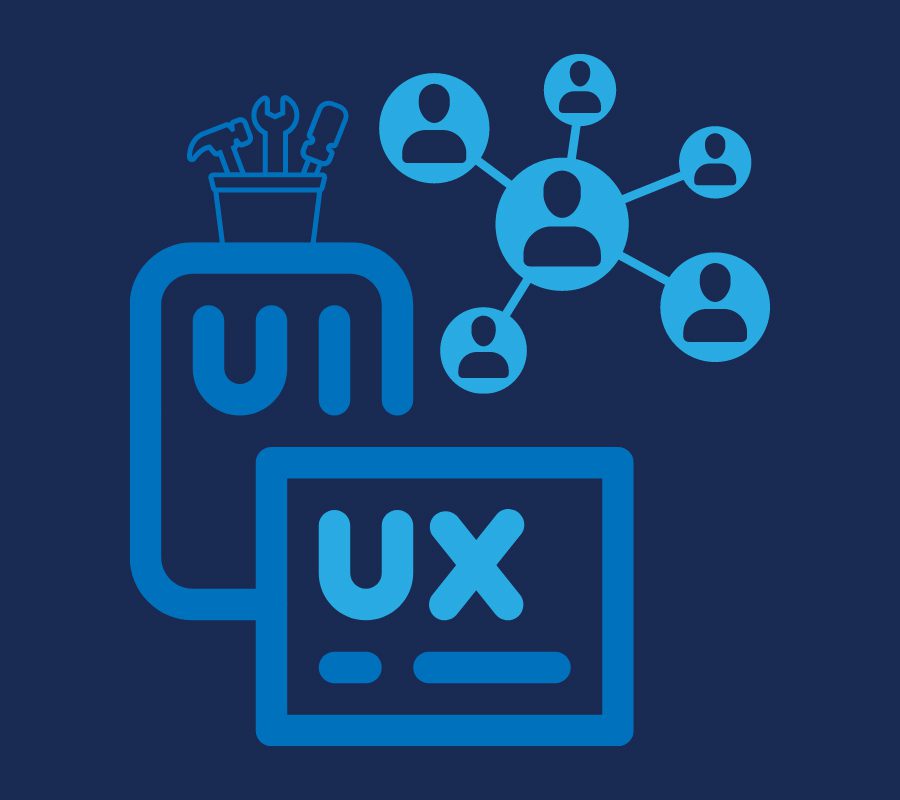Introduction:
The rise of remote work has reshaped the way teams collaborate, challenging UX design teams to find innovative ways to synchronize across geographical boundaries. Virtual teams often struggle to overcome communication and workflow obstacles stemming from working online.
At Azul Arc, we have over 16 years of expertise working remotely with teams in India and the USA. Our unique experience enables us to effectively bring together relevant talent to create applications that improve business processes and drive results for our clients. We’ve spent years looking for the best tools and platforms to implement into our processes. Here are some of the applications that we feel empower design teams to conquer the challenges that arise with remote work.
Video Conferencing for Face-to-Face Connections
Clear communication is vital to collaborative design, which is why video conferencing tools such as Zoom, Microsoft Teams, and Google Meet are critical. Regular video meetings encourage designers to collaborate despite physical distances, preventing isolation and keeping teams connected.
Project Management Platforms Keep Everyone Aligned
The lack of structure in remote work makes effective project management all the more important. At Azul Arc, our team uses ClickUp to assign and update tasks. This improves our workflow by centralizing task management and providing a clear overview of project timelines. Other applications like Asana, Trello, or Jira can also help UX design teams organize tasks and track progress. These tools streamline communication, ensuring everyone is on the same page regarding timelines, deliverables, and priorities.
Virtual Whiteboarding Tools Foster Creativity
Whiteboarding is a staple in UX design workshops, fostering brainstorming and ideation. In a remote setting, ideas aren’t as easily shared and built upon due to the lack of physical presence. Tools like Miro, MURAL, Microsoft Whiteboard, and Whimsical create a virtual space where teams can interact in real time. These platforms emulate the in-person whiteboarding experience, promoting a collective approach to design thinking. At Azul Arc, we utilize Whimsical to enhance our Object-Oriented UX (OOUX) process, ensuring our designs align with users’ mental models. Check out our blog post on OOUX to learn more.
Collaborative Prototyping To Enhance Real-Time Iterations
Prototyping, a crucial phase in UX design, requires rigorous and iterative effort. Prototyping tools like Figma and Adobe XD have become essential for remote teams. These platforms facilitate real-time collaboration, allowing team members to seamlessly provide feedback and make edits. The ability to work concurrently increases efficiency and expedites design cycles.
Documenting Design Systems: Unifying Language
Maintaining a cohesive and unified design team can be challenging when operating digitally. Managing a centralized design system documentation is crucial for consistency in remote teams. Tools like Sketch, Figma, or Zeroheight allow designers to document and share design flows, components, and guidelines. A well-documented design system ensures that everyone is on the same page, which translates to consistent and quality execution of projects.
Version Control and Collaboration
For code-based projects, version control systems like Git are indispensable. Platforms such as GitHub and GitLab facilitate collaboration by allowing team members to work on different branches simultaneously and merge changes smoothly. These tools ensure code integrity while housing collaborative problem-solving among developers and designers.
User Testing Platforms: Gathering Insights Remotely
The absence of face-to-face interactions with users can make conducting reliable user testing difficult. However, this issue can be circumvented with tools like UserTesting and Lookback. At Azul Arc, we use Google Analytics, Jotform, and MouseFlow to collect user feedback that helps us create an experience that caters to users’ needs. These platforms enable designers to observe user interactions, gather feedback, and make data-driven decisions without the need for in-person sessions. Remote user testing platforms ensure that design decisions are rooted in user insights, even when team members are dispersed.
Conclusion:
Leveraging the right tools and strategies for your remote team is paramount. From sharing ideas and feedback to clear communication, each platform you use plays a crucial role in fostering creativity and collaboration. By embracing these tools and strategies, UX designers can transcend physical distances, creating a cohesive and effective workflow that results in exceptional user experiences.
Whether it’s building an app or supporting your website, Azul Arc can help create the best possible experience for your users. Are you ready to bring your web presence to the next level?
